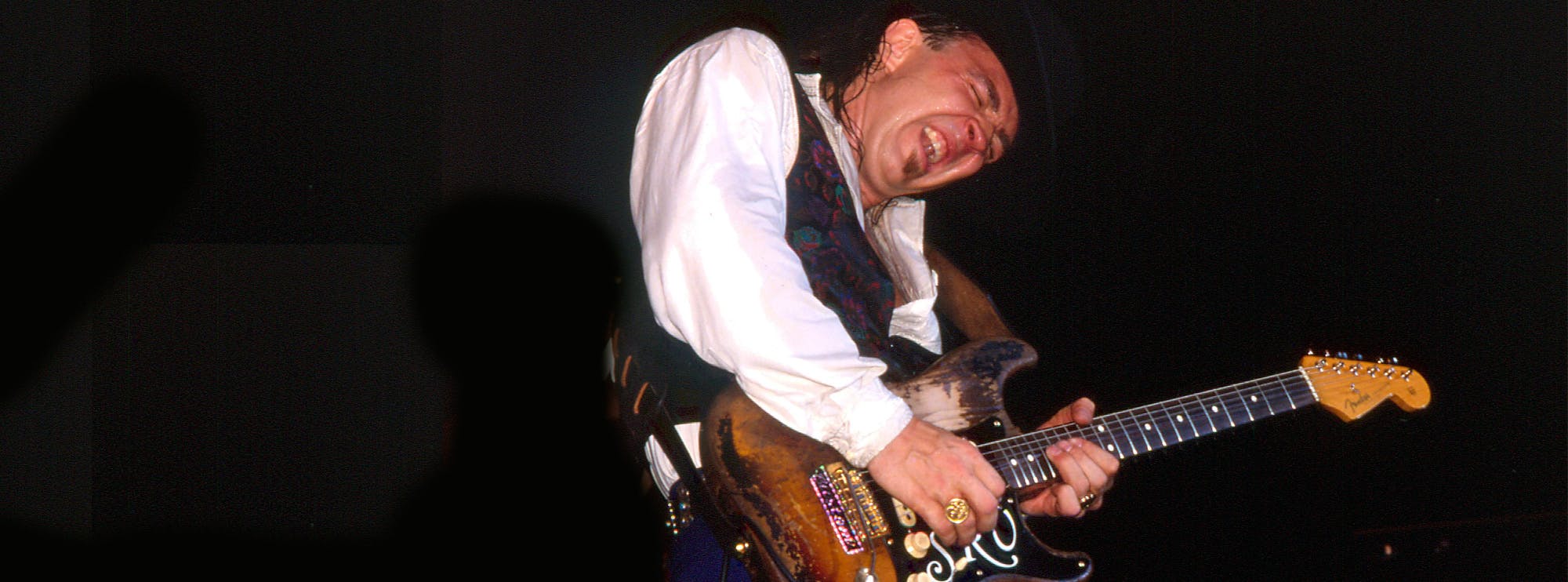AC/DC's "Powerage": An In-Depth Guitarist's Guide
AC/DC's "Powerage", released in 1978, stands as a monumental album in the rock genre, revered not just for its raw energy and memorable hooks, but also for the intricate guitar work that propels each track. As the fifth studio album by the Australian rock band, "Powerage" marks a pivotal moment in the band's discography, showcasing lead guitarist Angus Young's exceptional talent and contributing significantly to the development of rock guitar playing. This guide delves into the guitar intricacies of "Powerage", offering guitarists an in-depth understanding of the scales, solos, and techniques that define this iconic album. Lick Library veteran, Danny Gill, breaks down every note of this classic album.
The Lead Guitarist: Angus Young
Angus Young's contribution to "Powerage" cannot be overstated. Known for his energetic performance style and signature schoolboy uniform, Young's guitar playing on this album encapsulates his ability to meld melodic simplicity with technical prowess. His solos are characterised by their raw power, meticulous phrasing, and the seamless integration of blues scales with rock rhythms. Young's use of the Gibson SG guitar throughout the album contributes to its distinctive sound, offering a bright, piercing tone that cuts through the mix with clarity and intensity.
Track-by-Track Analysis
1. Rock 'n' Roll Damnation
"Rock 'n' Roll Damnation" opens with a punchy riff that immediately sets the tone for the album. The song is primarily in the A major scale, with Young employing a mix of power chords and open-string riffs to create a driving rhythm. The solo in this track showcases Young's use of string bending and vibrato, adding expressiveness to the pentatonic scale-based melody.
2. Down Payment Blues
A slow-burning track, "Down Payment Blues" features a blend of arpeggios and chord progressions that underscore its lyrical themes. The guitar solo in this song is a masterclass in dynamic control, with Young employing pull-offs and hammer-ons to navigate through the E minor scale, adding depth and texture to the track.
3. Gimme a Bullet
This track stands out for its groovy rhythm and the interplay between the guitar and bass. Young utilises the D minor scale, layering double stops and slides to craft a riff that's both catchy and complex. The solo in "Gimme a Bullet" highlights Young's ability to seamlessly blend scales, incorporating bluesy bends and rapid-fire alternate picking to elevate the song's energy.
4. Riff Raff
"Riff Raff" is a high-octane track that epitomises AC/DC's sound. It's built around an iconic riff that employs the A mixolydian scale, demonstrating Young's knack for creating memorable melodies using simple scales. The guitar solo is particularly noteworthy for its use of tapped harmonics and unison bends, adding a layer of sophistication to the track.
5. Sin City
Set in the scale of G minor, "Sin City" features a riff that combines palm-muting with open-string techniques to create a sound that's both gritty and driving. Young's solo in this track is a testament to his mastery of the fretboard, with a focus on legato playing and pinched harmonics to produce a solo that's as melodic as it is aggressive.
6. What's Next to the Moon
A song that leans heavily on AC/DC's blues roots, "What's Next to the Moon" utilises the A major scale with a focus on barre chords and slide guitar techniques. The solo section highlights Young's ability to convey emotion through his instrument, using sustain and vibrato to enhance the song's lyrical narrative.
7. Gone Shootin'
In "Gone Shootin'", Young crafts a laid-back, yet compelling riff that exemplifies the use of open-string riffs and syncopated rhythms. The solo in this track is notable for its use of octave melodies and double-stop bends, showcasing Young's versatility as a guitarist.
8. Up to My Neck in You
This high-energy track is built around a driving riff that employs the E major scale. Young's use of alternate picking and power chords creates a sense of urgency that's matched by the song's lyrics. The solo is a display of technical skill, with Young incorporating fast legato runs and tremolo picking to create a blistering passage that's both impressive and expressive.
9. Kicked in the Teeth
Closing the album, "Kicked in the Teeth" features one of the most aggressive riffs on "Powerage", utilising the G minor scale to create a sound that's both menacing and invigorating.
Guitar Techniques Used in "Powerage"
Throughout "Powerage", Angus Young employs a variety of guitar techniques that contribute to the album's unique sound. These include:
- Vibrato
- Alternate Picking
- Legato
- Double Stop Bends
- Unison Bends
- Pinched Harmonics
- Trills
- Chord Progressions
- Harmonics
- Pull-offs
- Power Chords
- Palm Muting
- Rakes
- Pre-Bends
- Hammer-ons
- Double Stops
- Slides
- Sustain
- Pick Slides
- String Bending
- Syncopated Rhythms
- Open String Riffs
- Bluesy Bends
"Powerage" is a testament to AC/DC's influence on rock music, particularly in the realm of guitar playing. Angus Young's work on the album exemplifies how a mastery of basic scales and techniques, when applied with creativity and emotional expression, can produce music that resonates across generations. For guitarists seeking to understand or replicate Young's style, "Powerage" serves as both a textbook and a source of inspiration, offering insights into the power of rock guitar.
About The Tutor
Tutor Profile
Danny Gill
Danny Gill is, without a doubt, the most loved tutor by our community. With an incredible array of DVDs and web lessons for LickLibrary covering a wide variety of topics all of which he covers with incredible detail, it's no wonder he carries as much respect as he does. As...




